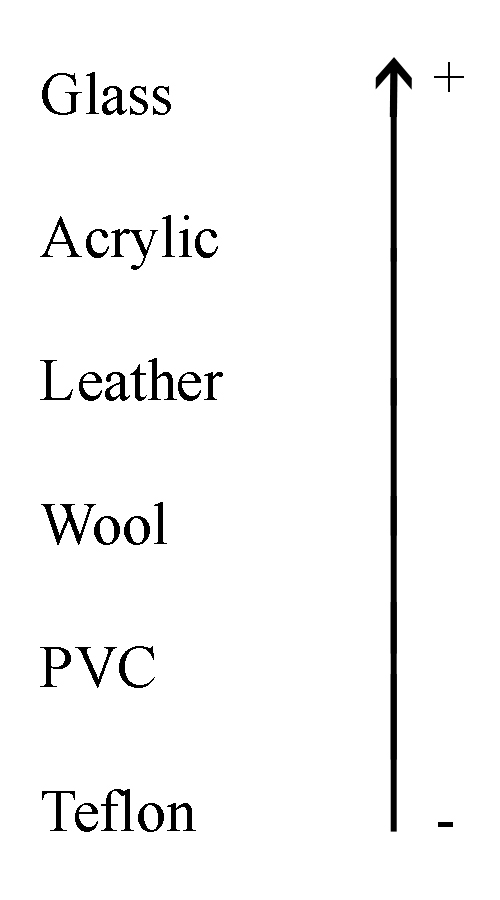Overview
Electrostatics is the study of charged particles which do not move through objects. The most common example of this is the concept of “static electricity”; an insulating object is rubbed with a material, and, depending on the material, either the electrons in the outer most orbitals of the atoms in the insulating object are transferred to the material rubbing against the insulating object, or the rubbing material gives up electrons to the material. This means the insulating object becomes positively charged since it has given up electrons to the rubbing material, which in turn becomes negatively charged.
Most of our demonstrations make use of the triboelectric effect. This is the process through which various materials become charged after being in frictional contact with another material (i.e. the static electricity that is built up when shoes are shuffled along a shaggy carpet). The polarity and strength of these charges depends on the material. For our demos, we will utilize materials represented in Figure 1. At the top of the list are those materials which tend to become positive when in frictional contact with other materials, while at the bottom of the list are materials that tend to become negative.

Figure 1: TriboElectric series for materials used throughout demos.
So, for example, PVC rubbed with leather will become negatively charged.
Demos
We have several demonstrations available for students to observe the basic properties of charge and electrostatics. These may be requested either individually, or as a collection of two or more.
- Charging by conduction
- Electrostatic induction
- Opposite charges attract and similar charges repel
- Charge flows throughout a conductor
- Electrostatic induction with a parallel-plate capacitor
- Charge resides on the outer surface of a conductor
- Conductor curvature affects charge
Written by Madison Harris